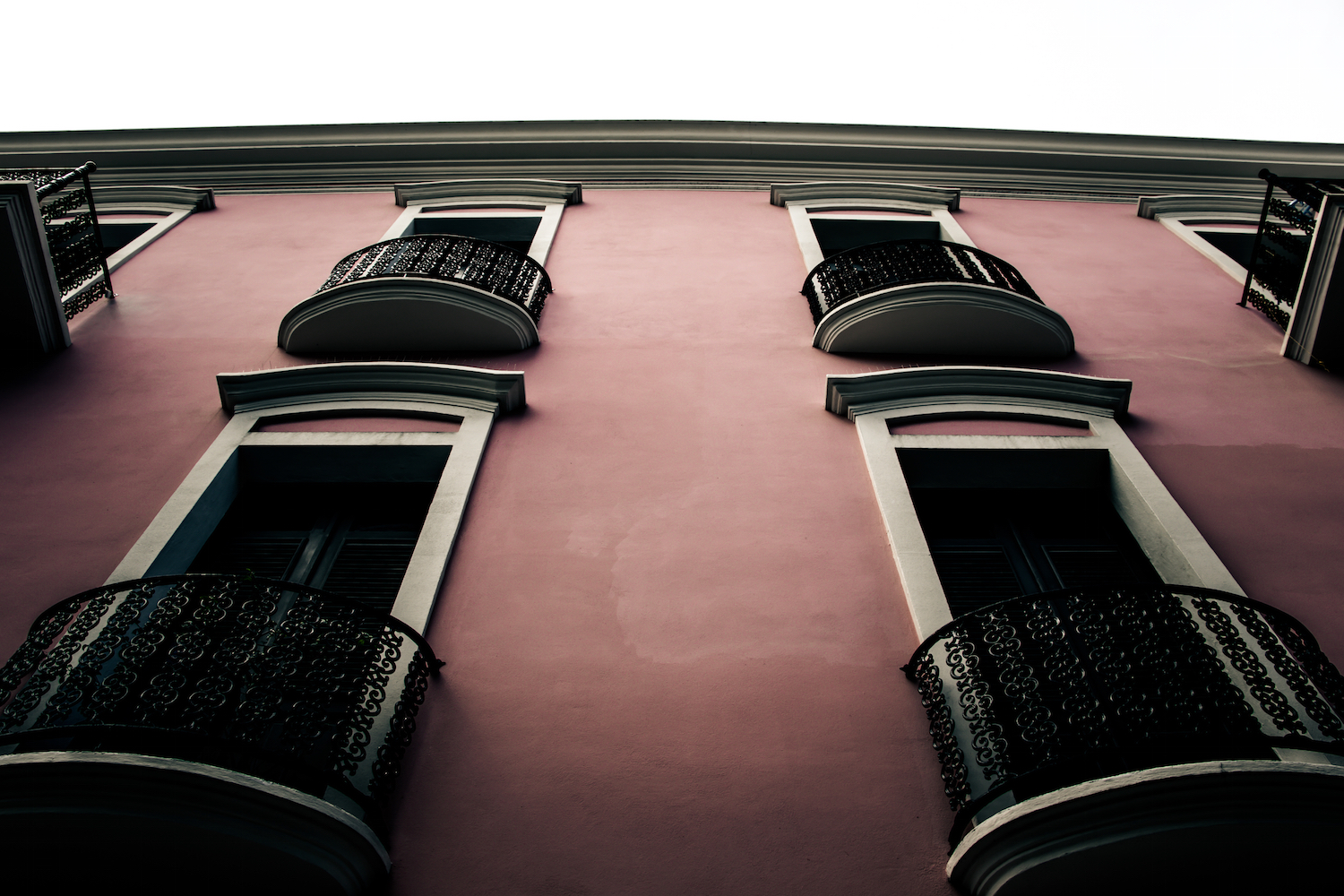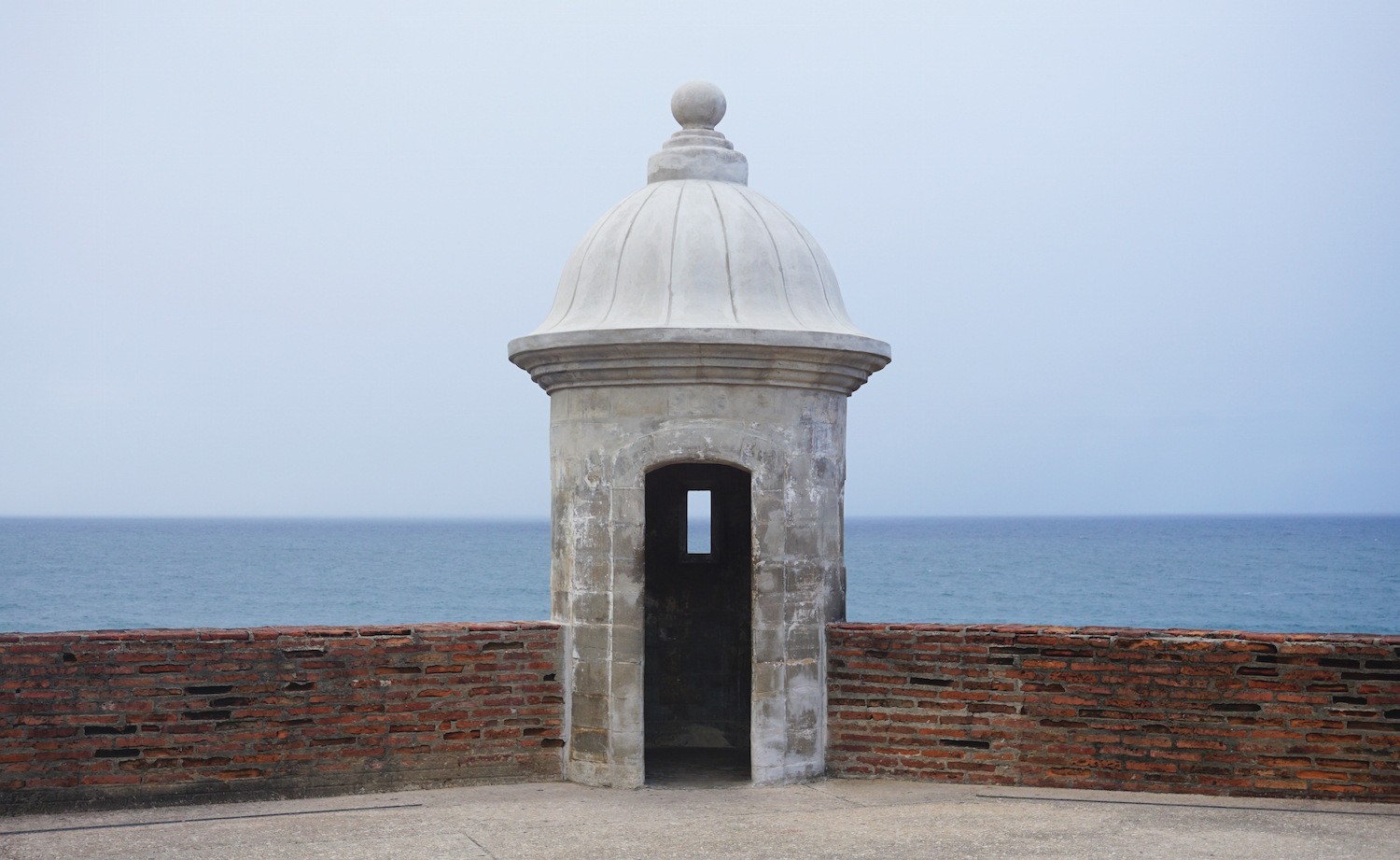Plena: A Music of the Puerto Rican People
by Kaito Nagashima, Matthew Bellury, and Trevon Johnson
Plena is a Puerto Rican musical genre with Afro-Puerto Rican origins; through participatory, energetic songs, performers can criticize relevant social concerns of Puerto Rican society from the stance of the commoner. This article investigates the history, structure, and function of plena music as it relates to Puerto Rican culture and society. This is achieved through a review of relevant sources, written and audiovisual, that discuss the genre’s origins, musical structure, and modern social relevance. These include scholarly and non-scholarly articles that provide descriptions of plena from its beginnings in the late 19th century to the 20th century, as well as descriptions of its function as a ‘music of the people’. The structure of plena music is also analyzed through an analysis of a typical plena song, “Don Pacheco” by Alma Moyó. The article ends by providing historical and modern examples of plena music in action, discussing the rise of well-known pleneros Rafael Cortijo and Ismael Rivera in the mid-20th century as well as the experiences of modern plena performers in the Las Fiestas de la Calle de San Sebastián music festival. This investigation of plena music reveals that plena music is multicultural; furthermore, it has a deep-rooted history in pursuing social equality amid prevailing conditions of social and racial marginalization and oppression. The genre still remains relevant in addressing modern issues that relate to cultural self-perception, such as the definition of Puerto Rican identity, as well as sociopolitical ones, namely the status of Puerto Rico as a commonwealth.
The island of Puerto Rico is home to a vast range of peoples who celebrate a culture of diversity, pride, and progress. Such a culture can be traced to several events in Puerto Rican history involving the struggles of many people for equality and freedom. According to Izza Tahir and Susan Anderson (2014), Puerto Rico is designated as a commonwealth of the United States; it is home to over three million people and has a deeply rooted history with both Spain and the United States that has heavily influenced its current cultural landscape. The tradition of plena music, which is rooted historically in both the Puerto Rican and African music-cultures, encapsulates the struggles of the commoner in Puerto Rican society amid rapid, drastic sociopolitical changes, ultimately uniting the working-class against injustices and oppression. It is a mixture of the musical and cultural lineages of the native Puerto Rican people and those of Africa (Drouet 2000). Plena is a musical genre that not only reminds Puerto Ricans of their culture and heritage, but also serves as a medium for catalyzing progressive social change.
The cultural background of plena has origins from at least the 20th century and possibly the late 19th century (Bailyn 2016). Vega Drouet states that the earliest documented origins of plena music came from the first decade of the 20th century, although the “style of plena current in Puerto Rico” was present for “half a century before” (Drouet 2000, 585). The first performances of plena music came from English-speaking Afro-Caribbean immigrants from the Virgin Islands and from St. Christopher (Drouet 2000, 585). Early instrumentation of this genre included the tambourine, the guiro (a hollowed gourd idiophone), the guitar, and the concertina (an accordion-like instrument) all accompanying the leading voice (Drouet 2000, 585). Accordingly, early performances were characteristically percussive. As such, the “heavy striking of the tambourine on the beat in binary meter” would become an integral stylistic feature of plena music during its development in the 1920s (Drouet 2000, 586).
Historical accounts of plena music identify two origin stories. In one account, a key figure in the birth of plena music was Joselino Oppenheimer; he is often cited as the pioneer of this musical genre, establishing it through singing work songs (Miller 2004). According to Miller (2004), Oppenheimer was a plowman who left his house in a low-income neighborhood in the city of Ponce, La Joya del Castillo, to work nearby fields. The first plenas were work songs constructed to “’the beat of ox and mule hooves and the rhythmic thrust of the plow’” (Miller 2004, 41). In an alternative account, plena music began when some former slaves, who had arrived in Ponce from the British Caribbean, began to mix their native, African-derived musical styles with those of major Puerto Rican locales, creating an entirely novel musical genre (Miller 2004, 42). This account, therefore, provides a more general view of the cultural origins of plena music with respect to the way musical ideas and traditions spread across the local Caribbean geography to Puerto Rico, according to Miller.
In addition, the historical roots of plena music can also be traced to poorer parts of the island, where the intermixing of several cultural influences molded its sound into its current form. According to Gary Morales (2014), plena most likely came from the urban areas of the south, particularly the coastal city of Ponce. Paulina Guerrero (2013) states that the genre resulted from societal changes during the early 20th century, serving as an expressive outlet for the working-class people of Puerto Rico—former slaves, peasants, and artisans—who voiced discontent toward conditions of the United States’ imperialism and social oppression. Plena music, with its African roots, blended with other cultural styles to establish its own unique musical style. Consequently, the influences of indigenous Jíbaro and Taino peoples, Europeans, and freed English-speaking Caribbean slaves who had moved to Puerto Rico in search of work can be heard in plena music (Maynard 2016).
This genre of music is used to communicate several themes, ranging from pledges and love to general teachings (Morales 2014). Other uses of this music include the narration of significant events in daily life (Morales 2014). The genre, in fact, is known as “el periodico cantado,” or “the sung newspaper,” because it communicates stories about the everyday lives of the Puerto Rican people (Maynard 2016).
The modern form of plena is characterized by unique organizational and thematic structures, offering great compositional flexibility for inexperienced and veteran performers alike (Manuel 1994). For instance, typical plena songs have verses pertaining to different topics (Manuel 1994, 258); the number of topics within a plena song varies with the number of verses it contains. This thematic variability can also be helpful when improvising or extending a song (Manuel 1994). Alternating with a topical verse is typically a simple choral refrain often accompanied by a small, round frame drum known as the pandereta, an instrument similar to the tambourine (Manuel 1994, 258).
The pandereta is arguably the most essential instrument in plena music. Because it is considered the cornerstone of plena, Manuel argues that a plena song without the pandereta is not actually plena music at all (1994, 258). Its importance, furthermore, is not simply traditional or aesthetic. In fact, the pandereta is key to the meter of a song; typically, two panderetas are used to reiterate a basic duple meter, while another musician improvises on his or her drum with syncopated patterns (Manuel 1994, 258). Through relegating these rhythmic functions among different panderetas, plena music attains its distinctly complex, percussive sound.
With this sound, plena music presents a medium in which performers can criticize prevailing societal conditions which they believe are problematic (Miller 2004, 40). Consequently, the genre catalyzed a lower-class rebellion against the wealthier upper-class and government officials, leading to conflict between these two social strata (Miller 2004). Drouet (2000) states that the genre was often satirical, describing individuals, events, and predominant social conditions from a critical perspective. Government officials and wealthier people rejected this music due to its association with poorer social classes and their social commentary (Miller 2004, 34). According to Miller (2004), during the early 1920s, the genre was “associated with poverty, lax morals, and ‘race’” (40) and, more broadly, a search for a national identity. In an interview by researcher Ruth Glasser with trumpeter and composer Ernesto Vigoreaux, higher officials’ distrust of Afro-Puerto Rican music, dating from times of slavery, became particularly pronounced when pleneros and other Afro-Puerto Rican artists faced incarceration (Miller 2004). The music also captures the defiant response that many Puerto Rican people held when American colonialism and expansionism became a prominent factor in Puerto Rican politics and society, with lyrics often providing “biting commentary on perceived social inequalities or injustice” (Miller 2004). The diversity of cultures and backgrounds that contributed to, and still contributes to, this musical genre also informs the continually dynamic and progressive Puerto Rican culture.
The communal, participatory nature of plena music makes it accessible to virtually all people, facilitating its use as a medium that unites those involved in a performance with music that conveys certain social messages and themes. For instance, it is completely normal to see weekly festivals and daily street musicians in Puerto Rico. Crowd participation is essential in plena; in fact, many of those attending plena festivals bring their own panderetas, allowing for active musicking from the audience (Guerrero 2013, 166). In the plena music-culture, audience members are not only allowed to play, but are also invited on-stage to sing and dance. This can be done without fear of making a mistake because virtually all Puerto Ricans have grown up with this musical genre. Most of the songs they sing at these festivals are improvised, illustrating the creativity and versatility of the plena genre (Guerrero 2013).
Energy is an important aspect of plena music, as performers must ‘feel’ the music. Festivals where plena music was performed could sometimes turn into political rallies, criticizing authoritative figures or preaching for change, but the music that played during these statements would be contagious and encourage dancing. Energy often correlates with youth, but experienced, older pleneros are the backbone of performances because they recognize that a performance’s perceived success depends not only on the quality of the musical performance itself, but also on the success of the collective group (Guerrero 2013). Almost every performance revolves around the community, and the willing attitude of its members to be part of the show. It should also be noted that performers often improvise songs, creating a “sing in the now” disposition, which also serves as the basis of dances that reenact current events with the purpose of spreading the daily news (Guerrero 2013). Pleneros do not feel obligated to write down or record everything they do. Ultimately, every festival, song, and performer is unique.
The song “Don Pacheco” by the New-York based bomba and plena band Alma Moyó, founded by Manuela Arciniegas, Alex Lasalle, and Raquel Rivera (Rivera 2012), is a model plena piece with key features of a typical performance that also illustrates the connection between plena song structure and its function as a music of the working-class people of Puerto Rico. The piece can be heard on YouTube. The video itself shows the traditional instrumentation that pleneros use in performances. The instrumentation used throughout the song, for example, adheres closely to that of traditional plena music; the use of three pandereta tambourines, in addition to a guiro and singing, helps qualify “Don Pacheco” as a traditional plena piece. The overall structure appears to be antiphonal; namely, call-and-response form is utilized in the text sung throughout the piece—one singer sings a two-line phrase alone; then, the entire group sings the same phrase, or a slight variation of the same phrase. The piece also appears to be in the minor mode—specifically, in B minor. The song frequently uses the dominant note, F#, to lead to the tonic, B. In addition, the predominant melodic line appears to be arched, rising in pitch from the tonic to the fourth, E, and ending on the second interval of the key, C#, in the first half—which corresponds to the first line of the sung text—and then falling in pitch in the second half to the tonic, which corresponds to the second line of the text. The melodic ostinato of this piece is characterized by the repetition of this basic, arched melodic structure, albeit with some variations. The instrumental portion, meanwhile, is characteristically percussive and particularly representative of plena, as the scraping of the guiro and the beating on the panderetas create a rhythmic ostinato that both supports the singers and also creates interest by itself through employing complex rhythms that complement one another during vocal breaks. The piece is in 4/4 time, and the consistent beating on the panderetas and scraping of the guiro create a rhythmic groove below the vocals.
These musical features, common to plena, facilitate improvisation and extended performances. For instance, in employing both rhythmic and melodic ostinato, others can overlay different texts on these repeated phrases, thereby allowing for easy changes in the lyrical structure of the song. Further, the steady beat and portability of the instruments allow for any person with a pandereta to join in the percussion of the song, increasing the audience’s participation in the performance of a traditional plena piece.
The apparent simplicity of instrumentation of plena music and its consequent accessibility to those living in poorer neighborhoods enabled the genre to enjoy tremendous popularity in Puerto Rico, particularly when musicians Rafael Cortijo and Ismael Rivera collaborated in popularizing the genre while maintaining its traditional roots in the mid-1900s (Miller 2004). Their musical work, characterized by a “’proletarian’ plena sound” (Miller 2004, 45), focused on both local and global issues that were relevant at the time. One notable subject that the two addressed through plena music was the life of those living in caseríos, housing projects constructed after Puerto Rico attained commonwealth status (Miller 2004).
Their lyrics, too, often feature vernacular themes and address topics regarding the local community, and their pieces often make use of signifying to speak of the Afro-Puerto Rican experience through plena music, which had formerly been largely marginalized (Miller 2004). Further, their adherence to disseminating “the centrality of the black experience” (Miller 2004, 45) through plena led to a kind of racial revolution, where the Puerto Rican public began to see a growing presence of Afro-Puerto Ricans in a space formerly occupied mostly by white Puerto Ricans (Miller 2004). Consequently, the Ismael-Cortijo partnership would become iconized as a symbol of the Afro-Puerto Rican through their performances of plena music (Miller 2004).
The ease of participation in plena music is also employed regularly in Puerto Rican music festivals today, which occur fairly consistently in the Puerto Rican music-culture, albeit in a less mainstream manner. Through performing plena music at these festivals, pleneros convey the definition of being a Puerto Rican in the modern age, where Puerto Rico’s status as a commonwealth of the United States conflicts with commoners’ desires for cultural and political autonomy (Guerrero 2013). This is shown in interviews with pleneros who performed in the Las Fiestas de la Calle de San Sebastián music festival in San Juan (Guerrero 2013). For instance, Guerrero (2013) highlights the issue of national identity discussed by author Peter Manuel, and how plena music embodies this identity—“the plena … is routinely performed by meandering ensembles at informal street parties, by protesting students, and by striking labor unions in front of targeted workplaces … But in the realm of … the mass media, they have given up their niches to … contemporary styles” (Guerrero 2013, 171). Despite the growth of mainstream musics in Puerto Rican culture, audiences nonetheless identify with plena and the central topics that it addresses (Guerrero 2013). This is demonstrated when audience members join pleneros in singing a traditional plena song, “Ola de la mar,” which conveys a message of peace that plena can bring to Puerto Rico, despite any predominant sociopolitical issues such as class disparities and political corruption, ultimately honoring the Puerto Rican identity and culture (Guerrero 2013). According to Guerrero, pleneros that perform at these festivals speak of an identity conflict regarding the culture of Puerto Rico, which has become subordinate to mainland American values, deviating from the culture of those who have lived only on the island. Pleneros believe that the aesthetic of plena music represents the marginalized nature of Afro-Puerto Ricans, who bear the cultures of native Puerto Rican islanders, and not the Americanized values that more affluent Puerto Ricans favor (Guerrero, 2013).
Although many of these music festivals have become commercialized through corporate sponsorships, Guerrero notes that the pleneros, who often perform in physical spaces away from the main acts, nonetheless continue playing and singing without any business sanctioning alongside the streets, occasionally attracting large audiences that stop the main parade acts. Therefore, the modern issue of Puerto Rican autonomy from mainland America is addressed both in the content of plena music performed at these festivals, as well as in the symbolic resistance to predominant mainstream acts and musics that threaten plena’s modern relevance with the potential for obsolescence.
Plena uncovers both the history and the traditions of Puerto Rico and its people, reflecting the influences of past social adversities and legacies on current society. The uniqueness of this musical genre lies in its ability to bring people together regardless of social or political circumstances. The inclusivity of plena music makes it highly palatable for all people: men and women, old and young, rich and poor. Its function as a music that can shun oppressors and promote positivity constantly molds society through democratizing the ideals and thoughts of the common people. Plena illustrates its multifaceted and adaptable nature by communicating ideas ranging from everyday events to social critiques. As a sounding board and community-building platform, plena remains a music of the Puerto Rican people.
References
Anderson, Susan, and Izza Tahir. “Puerto Rico.” Salem Press Encyclopedia. 2014. EBSCOhost. Accessed November 13, 2016.
Bailyn, Evan. “Music Genre: Plena – Music of Puerto Rico.” Puerto Rico: Know Us by the Songs We Sing. 2015. Accessed September 27, 2016. http://www.musicofpuertorico.com/index.php/genre/plena/.
Drouet, Vega H. “Some Musical Forms of African Descendants in Puerto Rico: Bomba, Plena, and Rosario Frances.” In New Grove Dictionary of Music and Musicians 20: 585-586. Edited by Stanley Sadie. London: Macmillan, 2001.
Guerrero, Paulina. “A Story told through Plena: Claiming Identity and Cultural Autonomy in the Street Festivals of San Juan, Puerto Rico.” Island Studies Journal 8, no. 1 (2013): 165-178.
Lasalle, Alex. “Alma Moyó – Bomba y Plena.” Filmed 2011. YouTube video, 6:25. Posted by “Ibrahim Gonzales.” January 12, 2017. https://www.youtube.com/watch?v=zXRMF2ndL2Y.
Manuel, Peter. “Puerto Rican Music and Cultural Identity: Creative Appropriation of Cuban Sources from Danza to Salsa.” Ethnomusicology 38, no. 2 (1994): 249-280. Accessed October 25, 2016. http://www.jstor.org/stable/851740.
Maynard, Ana. “Plena.” Puerto Rican Cultural Center. 2016. Accessed October 25, 2016. http://www.prfdance.org/plena.htm.
Miller, Marilyn. “Plena and the Negotiation of ‘National’ Identity in Puerto Rico.” Centro Journal 16, no. 1 (2004): 36-59. EBSCOhost. Accessed October 7, 2016.
Morales, Gary. “The Plena.” Puerto Rico Encyclopedia. 2014. Accessed October 25, 2016. http://www.enciclopediapr.org/ing/print_version.cfm?ref=06100235.
Rivera, Raquel. “New York Afro-Puerto Rican and Afro-Dominican Roots Music: Liberation Mythologies and Overlapping Diasporas.” Black Music Research Journal 32, no. 2 (2012): 3-24.
Associated course: MUSI 3020
Course faculty: Dr. Jean Kidula
WIP TA: Jennifer Larue
Citation style: Chicago



